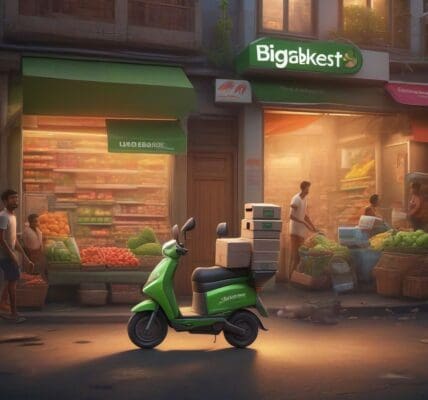The quick commerce sector is experiencing a substantial uptick in demand as air quality in north India, particularly Delhi-NCR, deteriorates. In a paradoxical twist, while consumers are opting for delivery services to avoid stepping outside, delivery personnel are increasingly reluctant to work under hazardous conditions. This growing dilemma poses significant challenges to delivery companies operating in the region.
As pollution levels reach alarming heights, many schools have transitioned to online classes and numerous businesses have implemented work-from-home policies. This societal shift has resulted in a heightened reliance on digital marketplaces for essential goods. A delivery partner associated with Zepto remarked, “Earlier, I used to deliver between 30 and 35 orders daily; now that number has increased to 45 or 50.” Despite the increase in orders, the efficiency of deliveries is hindered by prolonged delivery times, with nighttime deliveries taking an extra 5 to 10 minutes due to poor visibility and health risks linked to thick smog.
The immediate steps taken by companies reveal the gravity of the situation. For instance, Amazon has taken proactive measures to safeguard its delivery personnel by distributing N95 masks and urging its service partners to provide similar protective gear to employees. This initiative illustrates the need for companies to prioritize worker safety while attempting to fulfill the increasing demand for delivery services.
However, these safety measures alone are not sufficient to combat the root of the problem—the adverse environmental conditions affecting worker willingness to step outside. Many delivery workers are expressing genuine concerns regarding their health. The risk of exposure to unhealthy levels of pollution has prompted a reevaluation of the delivery workforce’s dynamics. In addition, the manpower shortage is exacerbated as fewer individuals are willing to take on the job under such conditions.
The quick commerce sector must adapt to this dual challenge: increasing order volumes while addressing the shortage of dependable delivery personnel. Strategic partnerships with health organizations could provide essential safety training and equipment for workers. Companies can also consider offering incentives for workers willing to take on shifts under such difficult circumstances.
Moreover, improving overall working conditions could help alleviate the reluctance among delivery personnel. Implementing flexible working hours or allowing drivers to choose their delivery locations based on air quality readings could motivate more workers to participate. Investments in technology to monitor pollution levels in real-time could also inform delivery strategies and operational choices to enhance working conditions.
The implications of this situation extend beyond the quick commerce sector. It indicates a pressing need for systemic reforms addressing urban air quality issues and developing adaptive strategies for businesses reliant on outdoor labor. This crisis also presents an opportunity for the retail sector and government bodies to collaborate on long-term solutions to improve public health and quality of life in urban areas.
As the quick commerce model continues to evolve, companies must prioritize not only profitability but also the well-being of workers and consumers alike. The health crisis posed by smog in Delhi-NCR serves as a stark reminder that the future of delivery services will depend on sustainable practices and policies that safeguard both the environment and the workforce.
As quick commerce grapples with these delivery hurdles, the industry can learn valuable lessons about resilience, adaptability, and the critical importance of prioritizing worker safety. The path forward may require innovative approaches, but the ultimate goal should be clear: to ensure that all stakeholders—workers, consumers, and businesses—thrive in a healthy and sustainable ecosystem.











